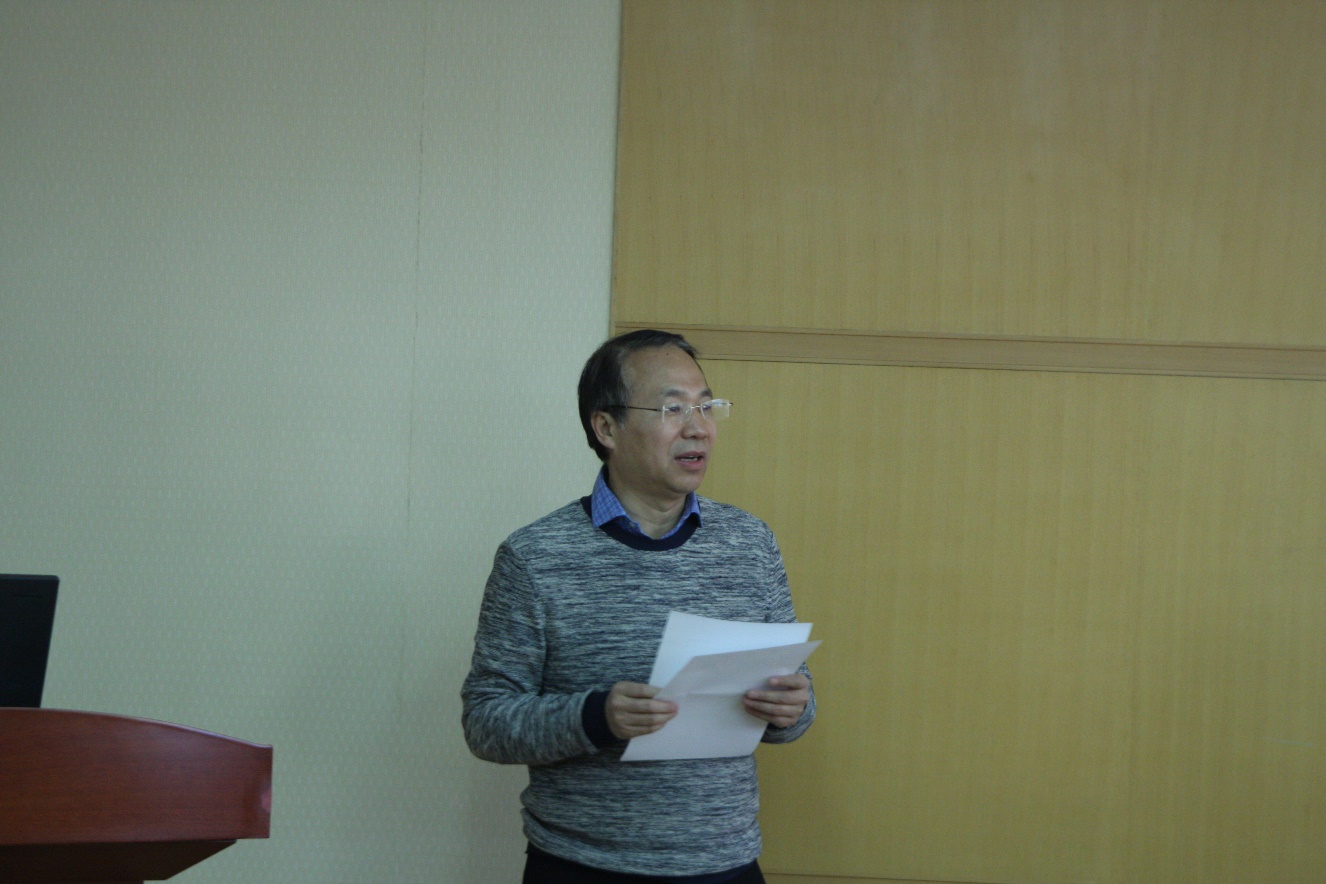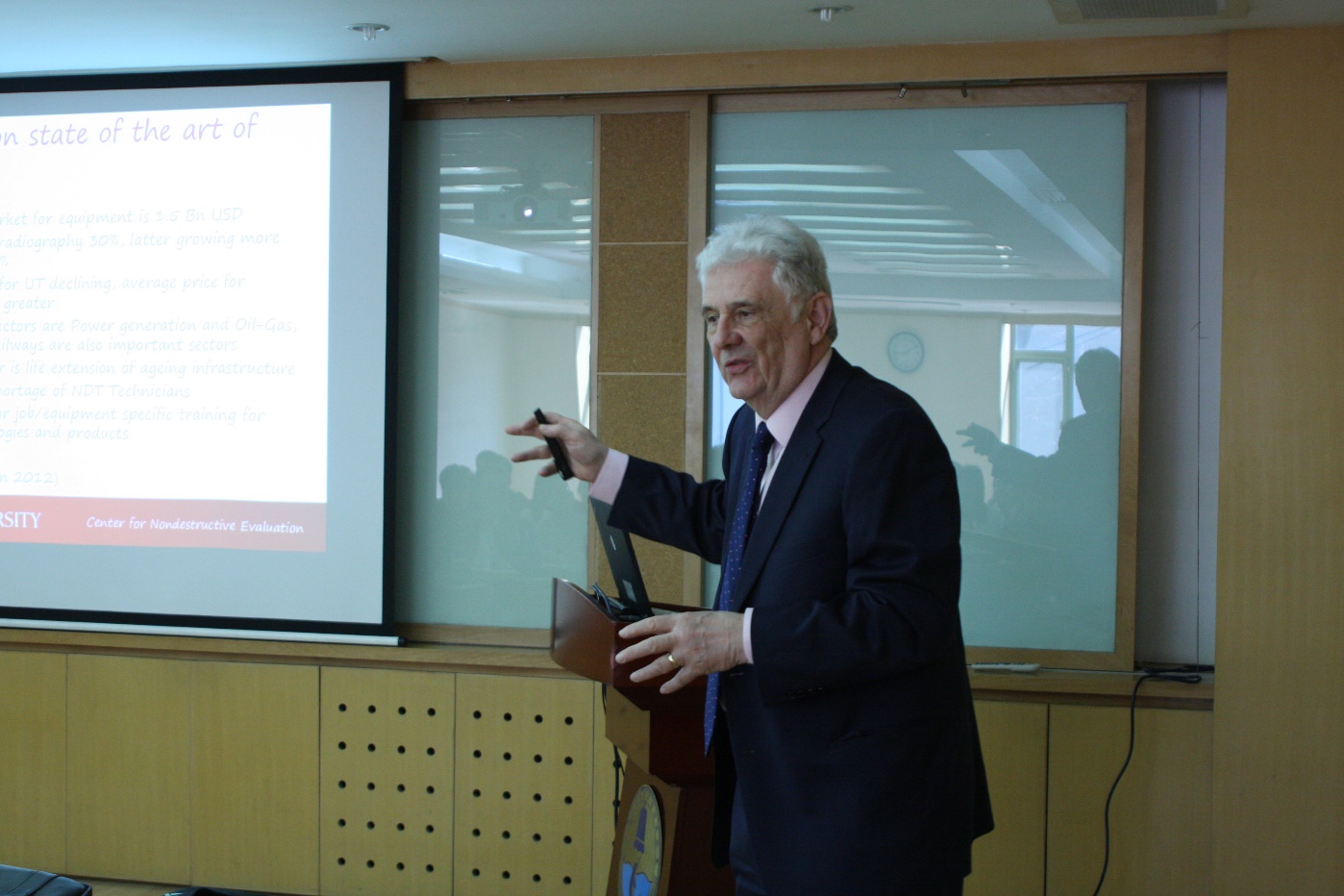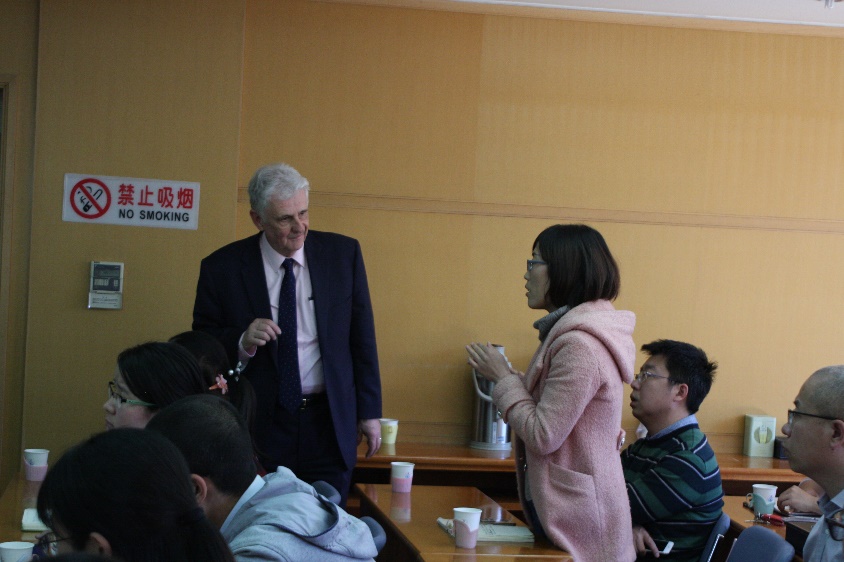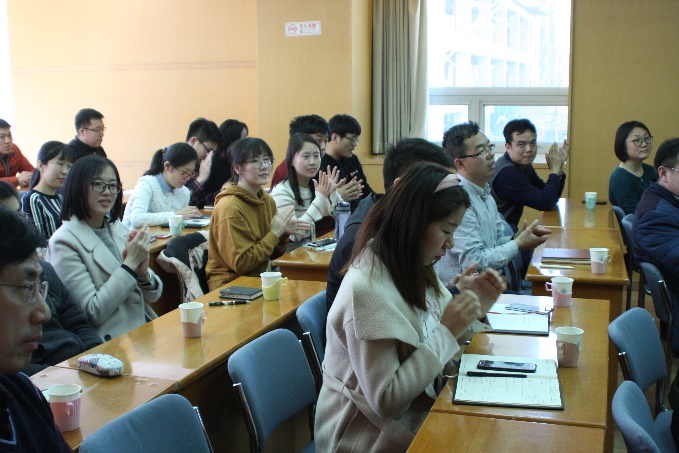Source: Research Center for Ultrasonics and Technologies
Invited by Prof. Xiuming Wang, Director of the Research Center for Ultrasonics and Technologies in IACAS, and Director of Beijing Engineering Research Center of Deep Drilling Exploration, Prof. Leonard J. Bond from University of Iowa in USA visited Institute of Acoustics, Chinese Academy of Sciences, and gave a presentation on March 21, 2019. Prof. Xiuming Wang presided over the meeting. Related staff and graduate students from IACAS participated the meeting.
The talk given by Prof. Bond was titled as “Global trends: the future for NDE?” In the talk, Prof. Bond first briefly summarized the development of NDT with brief reflections on the state of the art 40 years ago and where it is today. Then he discussed needs for NDE in world industry, together with its relationship to material science and material characterization. The relationships between SHM and NDE were also discussed, then came to the consideration of the “NDT Quality Chain.” He reviewed opportunities for NDE/advanced metrology, introduced challenges of NDE reliability and probability of detection (POD), and presented concepts of allow ables and prognostics. Finally, he identified various issues and challenges, including the need for the role of NDE as a full partner in product development. He ended the talk with some predictions for where NDE will go over the next decade.

Prof. Xiuming Wang presiding over the meeting. (Image by IOA)

Prof. Leonard J. Bond giving the talk. (Image by IOA)
In the Q&A session, Prof. Bond answered questions raised by the audiences. He discussed possible trends and developments in NDE/NDT, and also referred to related problems in other research areas such as Medical Ultrasonics and Noise Detection.
After the report, Prof. Bond and his two companions visited the laboratories of the Research Center for Ultrasonics and Technologies, including Transducer Lab, Ultrasonic Testing Lab, Deep Drilling instrument Lab, and Rock Physics Measurement Lab. They also visited the IACAS exhibition hall. Then Prof. Xiuming Wang discussed with Prof. Bond over the 2021 International Congress on Ultrasonics (2021 ICU Beijing) and possible bilateral academic cooperation.




Meeting Snapshots for the Q&A in Prof. Bond’s presentation. (Image by IOA)
Prof. Leonard J. Bond, Director of the Center for NDE, Iowa State University, Professor Aerospace Engineering, and Professor Mechanical Engineering. He served as Director of CNDE, Iowa State University and was a Professor from July 2012 - May 2018. He was previously a Laboratory Fellow at the Pacific Northwest National Laboratory, Richland, WA. During his career he has held positions as an academic, in industry and national laboratories in both the USA and UK. His technical work has focused on ultrasonics and its applications, with more recently applications in advanced diagnostics and prognostics.
Dr. Leonard Bond received his Ph.D. in physics from the City University, London. After completing his postdoc, which was sponsored by the UK’s Propellants, Explosives and Rocket Motors Establishment-Westcott, Dr. Bond held faculty positions at University College London (UCL). He also became the founding member of the UCL’s Nondestructive Evaluation Center and was appointed reader in ultrasonics. After leaving the UCL, Dr. Bond went on to become a research professor at the University of Colorado, Boulder. He was the founding director of the Idaho National Laboratory’s Center for Advanced Energy Studies National Laboratory. Most recently, he held the position of laboratory fellow at the Department of Energy’s Pacific Northwest National Laboratory. Dr. Bond’s research has focused on the use of ultrasonics and fundamental physical acoustics to characterize materials for aging energy and defense systems. In 2010, Dr. Bond became a Fellow of the American Association for the Advancement of Science and he is a Fellow of the UK’s Institute of Physics. He is the author or co-author of more than 250 publications. He has supervised 15 successful Ph.D. students, and holds 10 patents.


